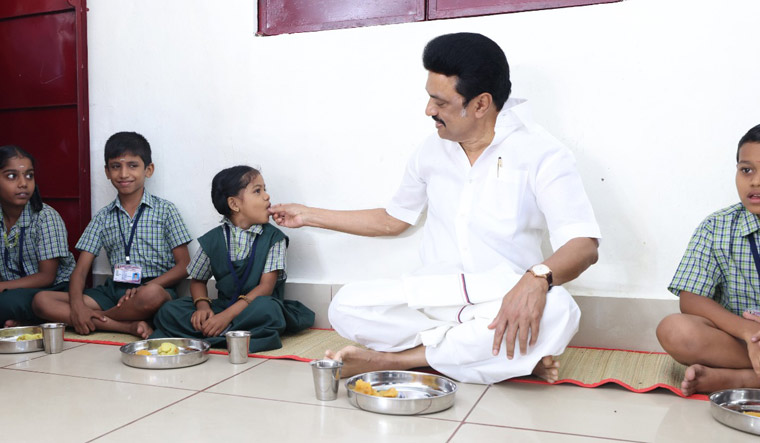The CM breakfast programme in Tamil Nadu is advocated for replication in other states in this newscard.

The Breakfast Plan of CM
- Around 1.14 lakh pupils are covered by the programme in 1,545 schools, including 728 taluk and village panchayat-level schools and 417 municipal corporation schools.
- The launch of the programme represents a significant turning point in the State’s history of offering free meals to students.
Evolution of the idea
(a) Pre-independence
- A proposal for supplying tiffin to pupils at a Corporation School in Thousand Lights at a cost of no more than one anna per student per day was approved by the Madras Corporation Council in November 1920.
- Theagaraya Chetty, the corporation’s then president and a leader in the Justice Party, claimed that the school’s male students’ poverty had a “greatly” negative impact on the institution’s strength.
- The program, which was expanded to four additional schools, made it easier for students to enroll.
(b) Post-independence
- When the then-CM K. Kamaraj decided to offer free lunch to underprivileged children in all elementary schools throughout the State, the idea received widespread application.
- A plan to provide pupils with lunch for 200 days a year was included in the budget for 1956–1957. At first, 65,000 students were served at 1,300 feeding facilities.
- The task of expanding the programme to include children in the 2–5 age range in Anganwadis and those in the 5–9 age range in rural primary schools fell to the then-CM MG Ramachandran in July 1982.
- The program—now known as the Puratchi Thalaivar MGR Nutritious Meal Programme—was subsequently expanded to include metropolitan areas.
- Since September 1984, students of standards VI to X have been covered under the scheme.
Beneficiaries of the programme
- Currently, there are 43,190 centres serving wholesome meals to over 7 lakh clients.
- This includes about 3,500 youngsters attending special schools run by the National Child Labour Project (NCLP).
- Additionally, around 15.8 lakh kids between the ages of 2 and 5 receive nutritious meals as a result of the Integrated Child Development Scheme (ICDS) and the nutritious meal programme being implemented in tandem.
Impact
- Increase in enrollment: From July to September 1982, the Gross Enrollment Ratio (GER) at primary level (standards I to V) increased by 10% over the same period in 1981 following the implementation of the midday meal scheme’s upgraded version in 1982.
- Females’ enrollment: According to a report released by the Tamil Nadu government to mark the start of the Scheme, enrollment among boys increased by 12% while that among girls increased by 7%.
- Attendance increase: Similarly, attendance increased from July through September 1982 by 33% compared to the same period the previous year.
Focus areas
- According to the 2019–21 National Family Health Survey (NFHS)–5 report, anaemia is a significant public health issue in Tamil Nadu, particularly for women and children.
- The prevalence of anaemia in children has increased to 57% from 50% during the 2015–16 NFHS-4 period.
- The departments of School Education, Public Health, Social Welfare, and Women Empowerment can work together to address this health concern as well as numerous others.
- Additionally, a sustained review of the scheme’s and the food program’s progress should be conducted in a constant and thorough manner.
Conclusion
- In other words, the government can offer significant benefits to the children for a relatively tiny additional cost.
- All of the state’s schools must be included in the programme.
Additionally, it would be wise to replicate the programme in other Indian states
